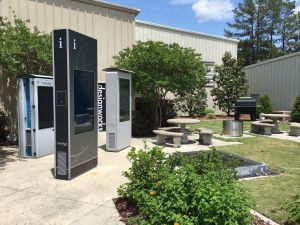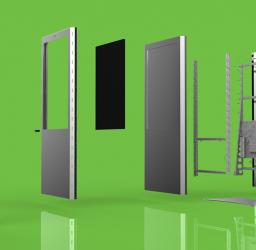Self-service kiosks have delivered tremendous benefits to businesses and organizations, as well as their consumers. While many self-service kiosks are located inside, there are a number of use-cases where interactive outdoor kiosks will drive the best ROI. These kiosks are being installed outside where weather, security, location, etc. need to be considered.
Interactive outdoor kiosks are often located in public spaces. When the kiosks have public access, they can be prone to theft and vandalism. To discourage and prevent tampering, outdoor kiosks should be designed with tamper-resistant features, such as strategically placed stiffeners, extra weld points, and compression locks. Proper security for outdoor kiosks will ensure that the physical, data, and network components of the kiosk are protected from tampering.

Site prep is critical when preparing to install an outdoor kiosk. The site has to be prepped with a level, concrete foundation. There also might be city or town codes that need to be approved before installing the kiosk. When interactive kiosks are installed outside, they are left open to factors and conditions that may result in internal or external damage from physical abuse or extreme weather. Kiosks should be installed with highly stable cement mounting to prevent shaking, banging and vibrations that could cause issues with internal components.
When designing or building kiosks for outside installation, it is imperative to choose a kiosk manufacturer that abides by certain standards. There are many standards out there, among them are the International Standards Organization (ISO) and Underwriters Laboratories (UL). These two industry standards ensure quality (ISO) and safety (UL). If you are choosing a vendor for an outdoor kiosk project, it’s imperative to understand if they maintain ISO certification and UL listing. ISO 9001:2008 exists so that manufacturers abide by strict quality controls. UL listed products ensure a particular level of safety likely necessary to install a kiosk in a public location. Looking for such quality and safety measures in your manufacturer will provide reliability and peace of mind when investing in an outdoor kiosk.



